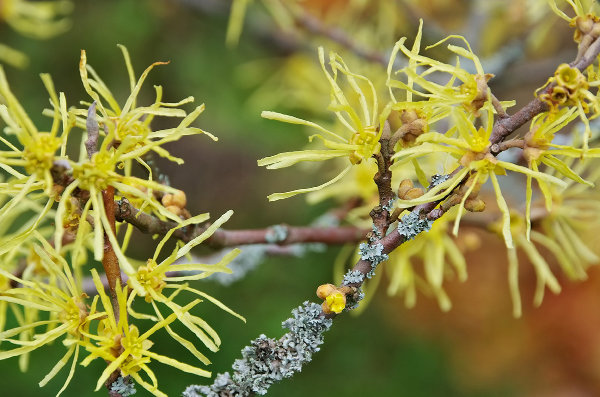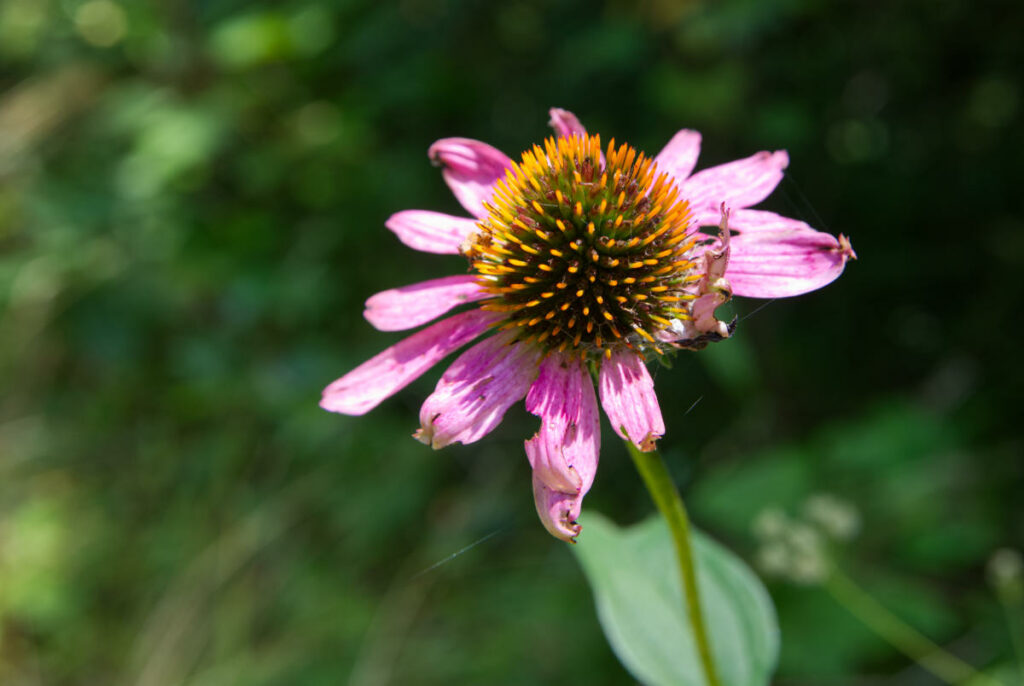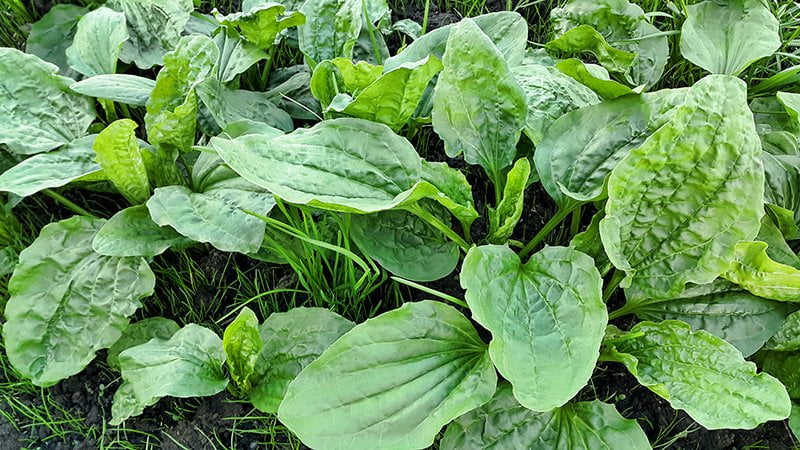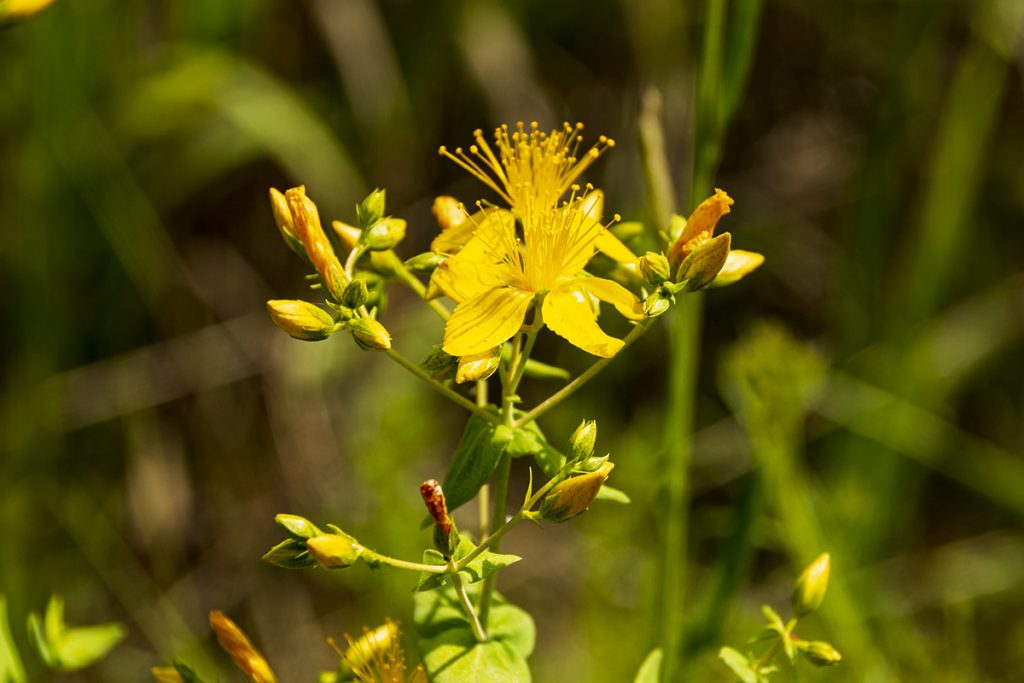
Welcome to the world of anti-inflammatory plants for skincare, where Mother Nature’s most potent healers take center stage. Plants have been used for medicinal purposes for centuries, but did you know that they also have incredible benefits for your skin? In this article, we’ll explore the top anti-inflammatory plants for skin care and how they can help you achieve a healthy, glowing complexion. Whether you have acne, rosacea, eczema, or simply want to keep your skin looking its best, these plants are sure to be a game-changer. So, let’s dive in and discover the magic of anti-inflammatory plants for skincare!
Many anti-inflammatory plants are commonly grown by people who may be surprised to find out what they have. Did you know that the active ingredients from many of your favorite skincare formulations come from herbs or flowers you may already be growing in your garden? Let’s take a closer look at some of these common anti-inflammatory plants for skincare.
How Can Common Plants Be Anti-inflammatory?
It may be surprising to people that some common plants you grow can have anti-inflammatory and other medicinal properties. However anti-inflammatory plants produce chemicals as part of the natural life cycle of the plant. Some of these chemicals may be used by the plant for defense or other purposes. Our ancestors learned what effects could be obtained by using plants medicinally, then they passed this knowledge down through the generations.
In the modern world, much of this knowledge has been lost to most people. But science is beginning to unravel the mystery of why these chemicals affect us as they do. Studies are being done to isolate the chemical compounds in plants that cause the effects we see. This is leading to many discoveries that seem to suggest our ancestors knew what they were doing by using these plants.
Anti-inflammatory plants contain chemical compounds which mediate the inflammatory response. This article will look at these common anti-inflammatory plants and the ways you can use them for the home treatment of skin conditions. Since your skin is the largest organ of the human body it makes sense to take good care of it. You may just have the perfect plants in your flower garden to treat itchy rashes, bug stings, and other skin ailments.
Anti-inflammatory Plants
Chamomile

You may be surprised to find out that the flowers you use to make chamomile tea can also be used to treat your skin. Chamomile is probably the most popular commonly grown flower that is also used medicinally. Although its most common use is for relaxation and sleep, it is also useful for calming many skin conditions.
Chamomile has been studied for anti-inflammatory effects in the lab and in animals. There are even a few studies with humans suggesting that chamomile extract was comparable in effectiveness to 0.25% hydrocortisone cream in treating eczema. In another clinical study patients with eczema were treated for 2 weeks with either a creme containing chamomile flower extract or 0.5% hydrocortisone. The creme containing chamomile extract was superior to hydrocortisone cream in reducing pruritus, erythema, and desquamation.
Chamomile has also been studied for its effects on wound healing. Although more and larger human studies are needed there are a few small studies that suggest the efficacy of chamomile for treating wounds. One study found that chamomile was superior to 1% hydrocortisone cream in treating skin lesions after surgery. The wounds treated by applying a compress containing chamomile for 1 hour a day was superior to treatment with 1% hydrocortisone cream.
Chamomile is used for treating skin conditions such as eczema, wounds, frostbite, bacterial skin diseases, and other skin irritations and inflammation.
Chamomile was found to be effective against gram-positive bacteria such as Staph aureus and fungi such as Candida.
How To Use Chamomile
You can use chamomile by picking the flowers and using them to make an infused oil, a balm, or a salve for use on the skin.
To make an infused oil simply pick the flowers and pack them into a glass jar. Don’t pack them too tightly. Next, pour a carrier oil over the flowers and cover them completely. You want to be able to shake the jar every few days to be sure the oil is in contact with all the flowers. Shaking the jar to mix it up every few days helps to get more oil in contact with the flowers to maximize the amount of chemical constituents from the plants that get extracted.
After 4-6 weeks your infused oil is ready for use. Strain out the plant material and store the oil in a cool dark place. The oil can be used as-is, or you can add beeswax and create a balm or salve if you prefer.
Chamomile is also available as an essential oil for those who don’t have a good place to grow their own.
Calendula

Calendula, more commonly called pot marigold, is another on our list of anti-inflammatory plants. It is a yellow-to-orange flower that is native to the Mediterranean region. Calendula is commonly grown in flower gardens or pots. They are easy to grow and they will flower all summer if you pick them every few days.
The effects of the Calendula flower on the skin are due to the high levels of plant flavonoids and triterpenes. Calendula contains potent antibacterial and antiviral components. This makes it an effective alternative treatment for preventing wound infections. It is used in over 200 topical skin treatments today.
It is also an effective anti-inflammatory plant. The compounds responsible for the anti-inflammatory effects are flavonoids and linoleic acid. This makes it an effective alternative treatment for skin rashes like diaper rash, ulcers, minor wounds, dermatitis, ulcers, and even ear infections.
How to use Calendula
Make an infused oil from the flowers of Calendula the same as you would for other herbal infusions. See the process under Chamomile above.
Use the oil, or the balm or salve you made from the oil, on skin irritations, bug bites and stings, minor wounds, and other skin ailments.
Witch Hazel

Witch Hazel (Hamamelis virginiana) is extracted from the bark of this shrub or low-growing bush. You can identify the witch hazel tree by the yellow flowers that bloom in autumn and into winter, unlike most plants. Although you may not be growing this one in your garden, you might see them growing in the wild in your area.
Witch hazel extract is astringent and useful for skin care. You can make your own extract from the bark, but it might be easier just to purchase witch hazel extract online.
Uses
- It can be used as an ingredient in cosmetic and medicinal preparations and can be used to help soothe skin.
- It may be combined with other ingredients or herbs or is gentle enough to be used alone.
- Can be used to help promote scalp and hair health.
- When mixed with water and sprayed, witch hazel can also be used to help reduce or remove stale odors and pet odors in the air, and on some surfaces.
- Witch hazel can also make an effective household cleaner, either alone or combined with other solutions.
Aloe Vera

Many people grow aloe vera in planters. The plants are attractive when grown in pots or in the garden where conditions are right. Aloe vera is useful for treating minor skin conditions and inflammation.
The active compounds in aloe vera include glycoproteins, sterols, enzymes, and carbohydrates.
Uses for Aloe Vera
Aloe gel is prepared from fresh leaves and can be extracted at home by either breaking off a leaf and applying the juice to the skin or peeling it to remove the gel from the interior of the leaf.
Aloe gel has many benefits as an anti-inflammatory plant. Uses for the skin include:
- Helps to Soothe Rashes and Skin Irritations
- Helps Cool Burns and Assists in Healing
- Helps to Heal Cold Sores
- Moisturizing for the Skin and Scalp
- Immune System Booster
- Provides Antioxidants and Reduces Inflammation of the Skin
Purple Coneflower

Purple coneflower (Echinacea purpurea) is a native flower in the US. It is also on our list of anti-inflammatory plants. It is grown around the world as an ornamental flower. It has surprising benefits for your skin too.
Purple coneflower is useful for skin care because it contains chemical compounds that improve the hydration of the skin and can help reduce wrinkles.
Use it the same way you would other flowers, by making an infused oil for topical application. It has been shown to reduce pain and is a potent anti-inflammatory.
Plantain

Although considered a weed by many, this common plant is actually used both medicinally and as a natural food source. I have been making plantain skin salve for several years now. I use it to apply to tick and chigger bites to help soothe the itching and help the skin in the area repair itself. If you want to learn more about this plant you can read the full article on plantain.
You can also make a soothing skin balm from plantain to treat bug bites and other skin conditions. The analgesic properties of the chemicals in the leaves can help to relieve pain from burns and minor skin wounds. The antimicrobial properties can help prevent infection of the wound and help the skin to regenerate. This has the effect of helping the wound heal faster.
A tea can be made from the leaves and used as a spot treatment for acne. Its antibacterial properties help kill the bacteria that cause acne. It can also be used to help prevent infection in minor wounds.
One of the easiest ways to use plantain is to remove a leaf from the plant and chew it to make a poultice. Apply to the skin over a bug bite or sting and get relief fast. To help remove a splinter you can cover the splinter with a poultice of plantain and cover it. It can help draw the splinter to the surface so you can remove it.
St. John’s Wort

St. John’s Wort is another fantastic example of an anti-inflammatory plant. It was used as herbal medicine to treat a range of disorders by both the Greeks and the Romans. It has antibacterial and antiviral properties. It has been shown that some flavonoids in St. John’s Wort have anti-inflammatory and neuroprotective properties, as well as antioxidants. So, as you can see, it has a host of health benefits.
St. John’s Wort contains two chemical constituents that have soothing effects on your skin. These are hypericin and hyperforin. These two constituents have anti-inflammatory, antioxidant, antimicrobial, and anticancer activity. In fact, hypericin is a photosensitizer that has shown promise in the treatment of non-melanoma skin cancer. Hyperforin has been shown to stimulate the healing of wounds by stimulating collagen production. You can purchase St. John’s Wort infused oil here.
If you would like further information and procedures for making a soothing skin salve you can head over to the article on St. John’s Wort Salve where I go through the process step-by-step.
Conclusion
Now you know about six common anti-inflammatory plants that may be growing in your yard or garden.
You can create your own home skin treatments using these plants by creating an infused oil to use on your skin. You can also add beeswax to create a thicker salve or balm.
Knowing these plants can help you be more self-sufficient and may keep you out of the doctor’s office for minor skin conditions.
Before attempting to use any natural plants for your health be sure and speak to your personal physician about any interactions that might happen if you are currently taking any prescription drugs. Some people with allergies may have a reaction to plants used for medicinal purposes. If you have the symptoms of an allergic reaction when using any of these plants stop using them immediately. If you develop shortness of breath, swelling, hives, a rash, trouble swallowing, or any other signs of a severe reaction seek medical care right away.
Be sure and check out our list of articles to discover a wealth of information on other wild edible and medicinal plants.
FAQs:
Q: What plants help skin inflammation?
A: There are several plants that can help reduce skin inflammation, such as aloe vera, calendula, chamomile, turmeric, and lavender.
Q: What is the strongest anti-inflammatory plant?
A: While there is no one “strongest” anti-inflammatory plant, some of the most potent ones include turmeric, ginger, green tea, and frankincense.
Q: What plant is a natural anti-inflammatory?
A: There are many plants that are natural anti-inflammatories, including turmeric, ginger, green tea, aloe vera, chamomile, and lavender.
Q: How can I reduce inflammation in my skin naturally?
A: You can reduce inflammation in your skin naturally by using anti-inflammatory plants and herbs in skincare products, consuming anti-inflammatory foods, getting enough sleep, reducing stress, and avoiding triggers like UV rays and pollution.
Q: What are the strongest natural anti-inflammatories?
A: Some of the strongest natural anti-inflammatories include turmeric, ginger, omega-3 fatty acids, green tea, and frankincense.
Q: What plants are natural anti-inflammatory?
A: There are many plants that have natural anti-inflammatory properties, including turmeric, ginger, green tea, aloe vera, chamomile, lavender, rosemary, and echinacea.